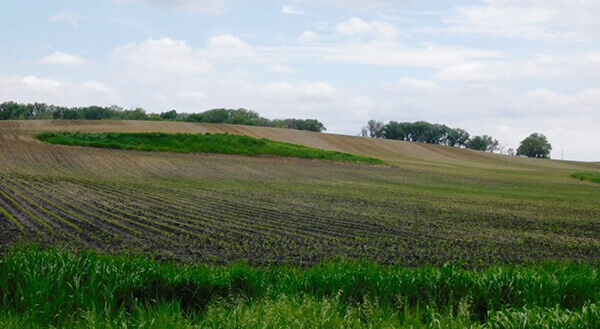Honoring Earth Day Today and Every Day on the Farm
April 22, 2020 Earth Day, like every day, is a great opportunity to take time to appreciate the earth. Living on a farm, favorable weather and healthy soil are never taken for granted. As Niman Ranch farmers, we are closely connected to the land, caring for the earth as the earth provides for us. We aspire to preserve the land and fresh water for future generations. In order to do this, we practice a variety of conservation and sustainable farming techniques to improve water and soil quality. We truly live every day like it’s Earth Day with our top 10 sustainable best practices.
Earth Day, like every day, is a great opportunity to take time to appreciate the earth. Living on a farm, favorable weather and healthy soil are never taken for granted. As Niman Ranch farmers, we are closely connected to the land, caring for the earth as the earth provides for us. We aspire to preserve the land and fresh water for future generations. In order to do this, we practice a variety of conservation and sustainable farming techniques to improve water and soil quality. We truly live every day like it’s Earth Day with our top 10 sustainable best practices.
Rotational Grazing
Rotational Grazing involves moving livestock from one pasture to another on a regular basis. This technique allows for vegetation and root systems to grow, improving the quantity and quality of forage in the pastures. Well managed rotational grazing increases absorption of water by the soil, reduces land degradation caused by overgrazing, and provides habitat for native ground-nesting birds.
Livestock Density Management
In addition to rotational grazing, maintaining livestock density, the number of animals per acre, also improves the absorption rates of water by the soil, prevents overgrazing, and improves the forage availability.
Buffer Strips
Buffer strips are areas of land covered in permanent vegetation used to preserve soil, water, and air quality. The permanent vegetation reduces soil erosion caused by wind and water, slows and traps fertilizer and pesticide runoff, and absorbs nutrients. Buffer strips provide ecosystem services as well as habitat for local wildlife.
Cover Crops
Cover crops such as alfalfa, small grains, and legumes are planted in the off season after the cash crops, such as corn and soybeans, to reduce soil erosion, suppress weeds, and improve the soil health. Keeping vegetation cover on the land greatly reduces wind and water erosion. Cover crops, such as winter wheat, cycle nutrients and organic matter into the soil.
Crop Rotation
Crop rotation involves changing which crops are planted on a seasonal basis to improve the health of the soil and reduce fertilizer needs. An example of a crop rotation sequence is alternating between planting soybeans and corn. Soybeans are planted the first year to add nitrogen to the soil. The next spring corn is planted. The nitrogen remaining in the soil from the soybeans is used by the corn reducing the need for nitrogen fertilizer.
Pollinator Habitat
Bees, birds, bugs and other pollinators are essential to the environment. They help flowers, plants and crops grow and are a keystone species. Unfortunately, many pollinators are under threat from habitat loss and other stressors. Farmers are an important part of the solution to this decline, by building safe habitat with plenty of diverse flowering plants and reducing pesticide use.
Because of our close connection to the land, environmental sustainability is very important to farmers. Leaving the land in better condition than we found it is a motto many farmers live by in an effort to provide the next generation of farmers with the same opportunities we had.
Sources:
www.nrcs.usda.gov/wps/portal/nrcs/detail/national/home/?cid=nrcs143_023568
